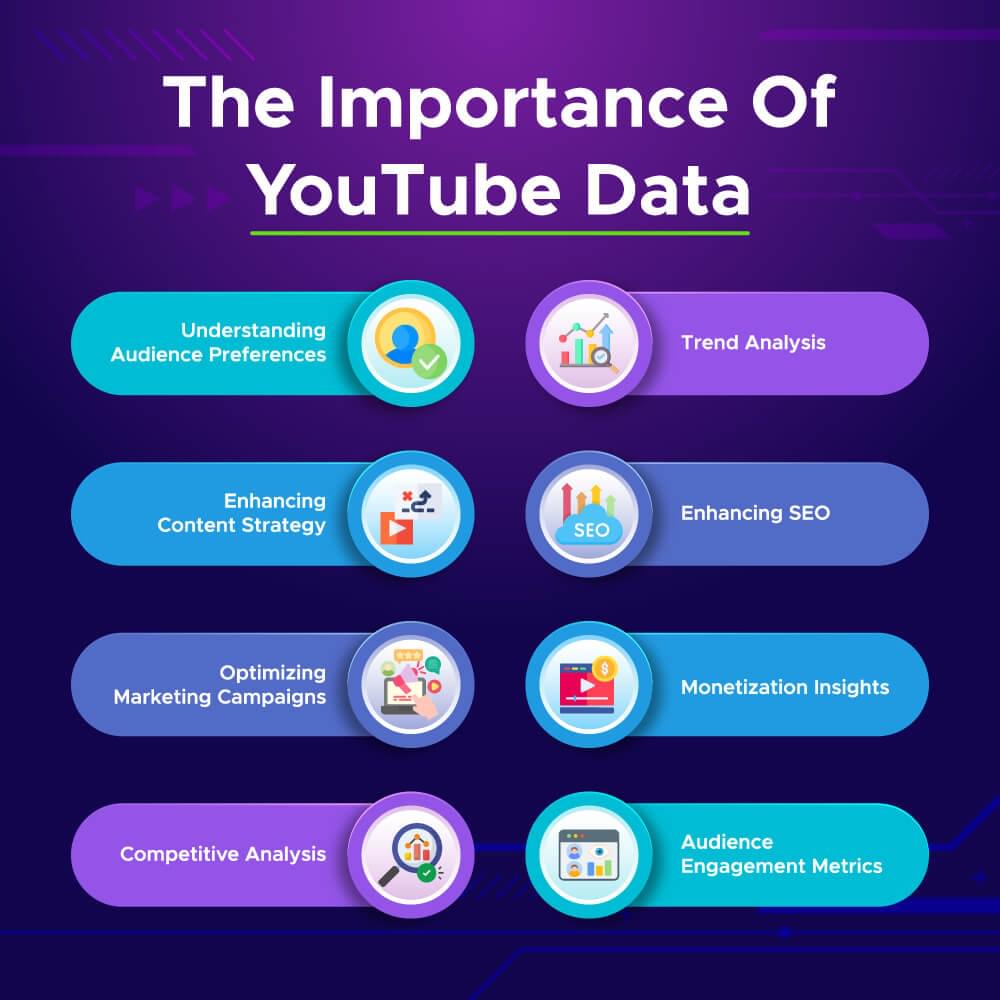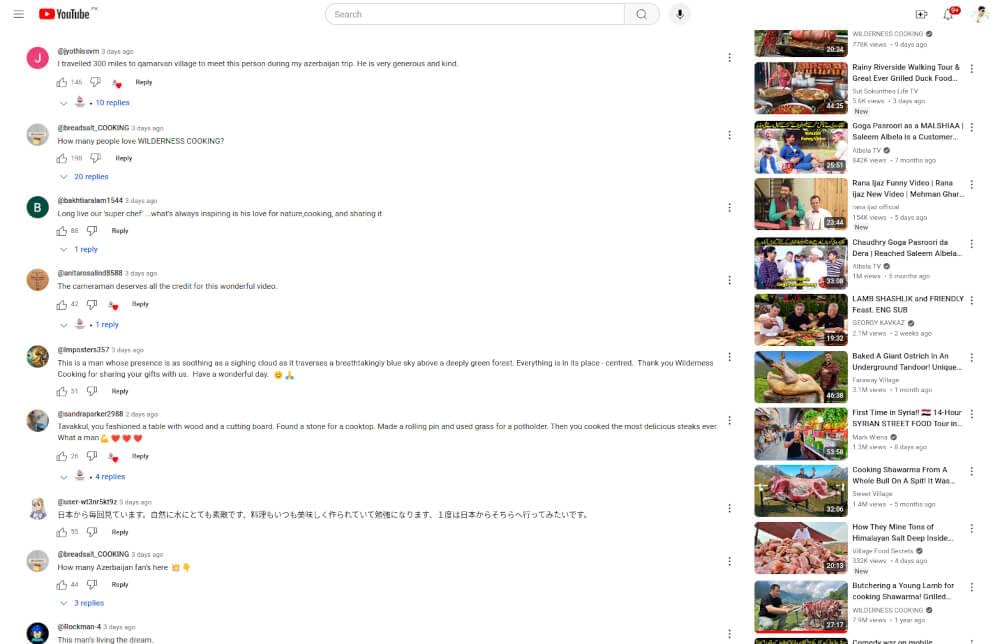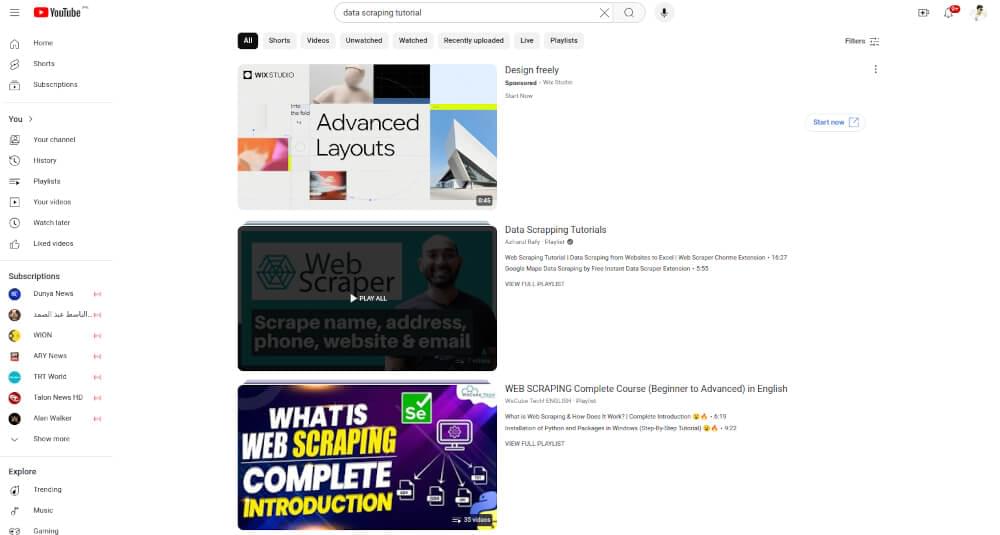YouTube is one of the largest content-sharing platforms in the world, with over 500 hours of content uploaded every minute. According to Statista, in November 2023, YouTube ranked as the second most visited website globally, attracting 113 billion monthly visits. This volume of public data and traffic has brought many opportunities for businesses and individuals to get beneficial information. You can scrape from YouTube to extract various types of data, including videos, channels, comments, and more.
Web scraping is a must for pulling data from public YouTube pages, video details, comments, channel info and search results. Use Python and yt-dlp with Crawlbase Smart AI Proxy to scrape YouTube data for your content strategies and research purposes.
This blog post will take you through the process of scraping data from YouTube, beginning with the basics. If you are looking to download YouTube videos, extract YouTube video information, scrape YouTube video comments, collect YouTube channel information, fetch YouTube channel subscriber numbers, scrape YouTube search results, scrape YouTube comments, or scrape YouTube channel information, this guide is for you. After this tutorial, you should be able to effectively scrape YouTube data for your needs. You can then use this information as input for scripting visuals or text for a YouTube intro maker.
Here’s an overview of how to scrape YouTube data for optimization, including how to scrape YouTube Shorts, scrape YouTube channel, extract video details, and more:
Table Of Contents
- The Importance of YouTube Data
- Key Data Points of YouTube
- Installing Python
- Necessary Python Libraries
- Downloading YouTube Videos
- Extracting YouTube Video Data
- Scraping YouTube Comments
- Gathering YouTube Channel Information
- Scraping YouTube Search Results
- Optimization with Crawlbase Smart AI Proxy
- Integrating Crawlbase Smart AI Proxy with yt-dlp
Why Scrape YouTube?
In this section we’ll cover why YouTube data is so important, what data points to focus on, and how a YouTube scraper can help you get this information. Data scraped from YouTube can be used for in-depth analysis and optimization, helping you understand trends, audience preferences, and content performance.
Scraped data can include channel data such as social links, comments, video titles, descriptions, and other metadata. You can collect data to build a comprehensive YouTube dataset, which is valuable for research, marketing, and content strategy.
The Importance of YouTube Data

YouTube data is gold for businesses, marketers and researchers. It gives you insight into what your viewers like, what’s trending and what’s engaging. By looking at YouTube data you can optimize your content, improve your marketing and get ahead of the competition. For example, which videos get the most views and comments will help you create content that speaks to your audience.
When collecting and analyzing YouTube data, it is important to ensure that all scraping activities are conducted responsibly and in compliance with legal and ethical guidelines.
Key Data Points of YouTube
When scraping YouTube there are several data points you can extract to get valuable insights:
Video Details
- Title: The video title helps understand the content and its appeal.
- Description: Provides context and additional information about the video.
- View Count: Indicates the video’s popularity.
- Like Count: Shows audience approval and engagement.
- Upload Date: Helps track the freshness and relevance of content.
Comments
- User Comments: Direct feedback from viewers, revealing their thoughts and reactions.
- Comment Count: Indicates the level of engagement and interaction.
- User Interactions: Includes likes and replies to comments, showing further engagement.
Channel Information
- Channel Name: Identifies the content creator.
- Description: Provides an overview of the channel’s purpose and content.
- Subscriber Count: Measures the channel’s popularity and reach.
Search Results
- Video Titles: Helps identify trending or relevant videos for specific keywords.
- Video Links: Direct URLs to the videos, useful for further analysis.
In this guide, we will use Python and the yt-dlp library to create custom scrapers for extracting YouTube data.
Setting up your Environment to Scrape YouTube in Python
To start scraping YouTube you need to set up your environment. This involves installing Python and the necessary libraries for web scraping.
Installing Python
First you need to have Python installed on your computer. You can download the latest version of Python from the official Python website. Follow the instructions there to install Python on your system.
Necessary Python Libraries
Once Python is installed you need to install some essential libraries. These libraries will help you scrape data from YouTube efficiently. Open your terminal or command prompt and run the following command:
1 | pip install yt-dlp pprint |
- yt-dlp: This library is a powerful tool for downloading videos and extracting video data from YouTube. It acts as a YouTube video scraper.
- pprint: This library provides a capability to “pretty-print” data structures, making them easier to read and understand by formatting them in a more human-friendly way.
With Python and these libraries installed, you’re ready to start scraping YouTube data using a YouTube channel scraper or a video scraper. In the next sections we’ll go into downloading videos, extracting data and optimizing your scraping process.
Downloading YouTube Videos
Downloading videos from YouTube can be done easily with the yt-dlp library. It’s important to note that downloading the actual video file is different from scraping metadata or comments, which only retrieves information about the video rather than the video content itself. This is a great tool for extracting video content so it’s a powerful YouTube video scraper. Below we’ll walk you through the steps to download YouTube videos using yt-dlp, including the complete code needed for the process.
Step-by-Step Guide to Download YouTube Videos
Import the Library
First, import the yt-dlp library in your Python script:
1 | from yt_dlp import YoutubeDL |
Set the Video URL
Define the URL of the YouTube video you want to download. For example:
1 | video_url = "https://www.youtube.com/watch?v=Arbc2WUURpk" |
Download the Video
Use the download method to download the video. Here’s a simple example:
1 | opts = {} |
This script will download the specified video and save it in the current working directory.
Using yt-dlp as your YouTube scraper makes it easy to download videos for offline use or further analysis. In the next section, we will go into extracting data from these videos.
How to Extract YouTube Video Data
After downloading a YouTube video, you might want to extract more information about the video. This can include the title, description, view count, and more.

Using yt-dlp, you can efficiently extract this data, making it a robust YouTube video data scraper.
Step-by-Step Guide to Extract Video Data
Import the Library
First, import the yt-dlp library in your Python script:
1 | from yt_dlp import YoutubeDL |
Set the Video URL
Define the URL of the YouTube video you want to extract data from. For example:
1 | video_url = "https://www.youtube.com/watch?v=Arbc2WUURpk" |
Extract Video Information
Use the extract_info method to get details about the video. Here’s an example:
1 | opts = {} |
This script will print out the title, view count, and description of the specified video.
Example Output:
1 | Title: Roasting Juicy Beef Steaks on Hot Stones! Outdoors Cooking Alone in the Mountains |
By using yt-dlp as your YouTube video data scraper, you can get more information about videos and enhance your data analysis and optimization efforts. In the next section, we will cover scraping YouTube comments to get more insights.
How to Scrape YouTube Comments
Gathering comments from YouTube videos can give you valuable insights into viewer opinions and engagement.

Using yt-dlp, you can scrape comments efficiently, making it a comprehensive YouTube video comments scraper.
Step-by-Step Guide to Scrape YouTube Comments
Import the Library
Start by importing the yt-dlp library in your Python script:
1 | from yt_dlp import YoutubeDL |
Set the Video URL
Define the URL of the YouTube video from which you want to scrape comments. For example:
1 | video_url = "https://www.youtube.com/watch?v=Arbc2WUURpk" |
Extract Comments
Use the extract_info method with the getcomments option to fetch comments. Here’s how:
1 | opts = { |
This script will print the number of comments and display the comments fetched from the specified video.
Example Output:
1 | [ |
Using yt-dlp as your YouTube comments scraper, you can get and analyze comments to understand viewer feedback and engagement. In the next section, we will go into getting information about YouTube channels.
Gathering YouTube Channel Information
To fully optimize your YouTube scraping process, you might need information about YouTube channels. This data can include the channel name, description and more.

Using yt-dlp, we can easily create YouTube channel scraper.
Step-by-Step Guide to Gather Channel Information
Import the Library
Start by importing the yt-dlp library in your Python script:
1 | from yt_dlp import YoutubeDL |
Set the Video URL
Define the URL of the YouTube channel from which you want to scrape information. For example:
1 | channel_url = 'https://www.youtube.com/@CrawlbaseChannel' |
Extract Channel Information
Use the extract_info method with the quiet, extract_flat, and force_generic_extractor option to get channel information. Here’s how:
1 | def get_channel_info(channel_url): |
This script will print the number of comments and display the comments fetched from the specified video.
Example Output:
1 | id: @CrawlbaseChannel |
Using yt-dlp as YouTube channel information scraper, you can scrape all available information about the channel and get a full overview of the channel’s details. In the next section, we will go into scraping YouTube search results.
How to Scrape YouTube Search Results
To scrape YouTube search results efficiently you can use the yt-dlp library. This makes it easy to extract video titles, URLs and other metadata from search results.

Step-by-Step Guide to Scrape YouTube Search Results
Import the Library
Start by importing the yt-dlp library in your Python script:
1 | from yt_dlp import YoutubeDL |
Set the Search Query
Define the Search Query for which you want to scrape YouTube search results. For example:
1 | query = "data scraping tutorial" |
Extract Search Results information
Use the following Python function to scrape YouTube search results. This function will extract video titles and URLs from the search results for a given search query.
1 | def scrape_youtube_search(query): |
Execute the script in your terminal. It will search YouTube for the query “data scraping tutorial” and print the titles and URLs of the top 10 results.
Example Output:
1 | Title: Web Scraping Tutorial | Data Scraping from Websites to Excel | Web Scraper Chorme Extension |
Using yt-dlp library you can scrape YouTube search results. In the next section we will go into optimizing your scraping process using the Crawlbase Smart AI Proxy.
Optimization with Crawlbase Smart AI Proxy
Crawlbase Smart AI Proxy is a powerful tool to supercharge your web scraping by providing IP rotation, residential proxies, and high success rates. This is perfect for bypassing restrictions and scraping large data from platforms like YouTube. With Crawlbase Smart AI Proxy you can scrape efficiently and avoid getting blocked.
Integrating Crawlbase Smart AI Proxy with yt-dlp
To optimize your YouTube scraping with yt-dlp, integrating Crawlbase Smart AI Proxy can help a lot. Here’s how:
Set Up Crawlbase Smart AI Proxy: You need to have an account with Crawlbase and obtain your API token.
Configure yt-dlp to Use Crawlbase Smart AI Proxy: Incorporate your Crawlbase Smart AI Proxy credentials to the yt-dlp setup. This will rotate IPs and avoid bans while scraping YouTube data.
1 | from yt_dlp import YoutubeDL |
Download YouTube Videos with yt-dlp and Crawlbase Proxy: Use yt-dlp to download YouTube videos while enjoying the IP rotation and proxy management of Crawlbase Smart AI Proxy.
1 | # Download YouTube video using yt-dlp with Crawlbase proxy |
Note: Long Crawlbase Smart AI Proxy sessions are not fully supported yet. You may encounter errors when downloading large YouTube videos using yt_dlp. For large downloads, using a proxy that supports long-lived or sticky sessions is recommended.
Scrape YouTube Data with yt-dlp and Crawlbase Proxy: Extract detailed information about YouTube videos and comments while using Crawlbase Smart AI Proxy to scrape reliably and uninterrupted.
1 | # Extract video information using yt-dlp and Crawlbase proxy |
By integrating Crawlbase Smart AI Proxy with yt-dlp, you can scrape YouTube data efficiently and minimize the chance of getting blocked. This way you can collect valuable data like video details, comments and channel information.
Optimize YouTube Scraping with Python and Crawlbase
Scraping YouTube data can give you many insights and optimization opportunities. With tools like yt-dlp and Crawlbase Smart AI Proxy, you can collect essential data like video details, comments and channel information.
yt-dlp for direct scraping and Crawlbase Smart AI Proxy for extra performance will help you overcome common issues like IP blocking and CAPTCHA challenges. Whether you want to analyze viewer engagement, track competitor content or optimize your own YouTube presence, these tools make it easy and reliable.
Explore additional scraping guides:
How to Scrape Realtor.com - Extract Real Estate Data
How to Scrape Samsung Products
How to Scrape Google Scholar Results
How to Scrape Apple App Store Data
How to Scrape Yellow Pages Data
Frequently Asked Questions
Q: Is YouTube scraping legal?
Scraping YouTube data is legal and useful for business purposes if you comply with YouTube’s terms of service. Many businesses use YouTube data for marketing, sales, and research by extracting publicly available information such as:
- Video Details: Titles, descriptions, and view counts.
- Comments: Publicly posted comments on videos.
- Channel Information: Channel names, descriptions, and subscriber counts.
- Search Results: Titles and URLs of videos from search queries.
It’s important to follow legal guidelines, respect privacy policies, and avoid copyright violations. Always use data responsibly and ethically to stay within legal boundaries.
Q: How to scrape comments from YouTube?
To scrape comments from YouTube you can use the yt-dlp library in Python. Set the getcomments to True and use the extract_info method to get comments along with video metadata. For example:
1 | from yt_dlp import YoutubeDL |
Q: How to scrape data from YouTube in Python?
Use yt-dlp to scrape data from YouTube in Python. Install it using pip install yt-dlp, then use the following code to get video details:
1 | from yt_dlp import YoutubeDL |










